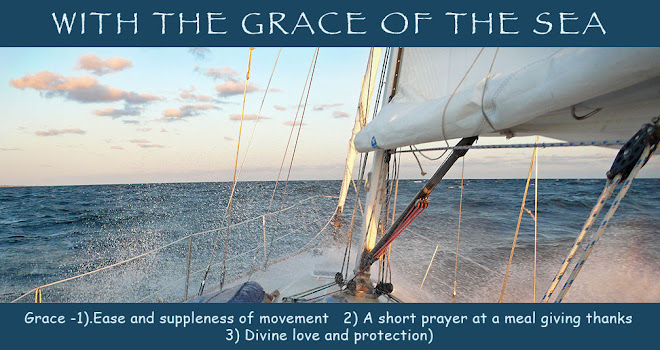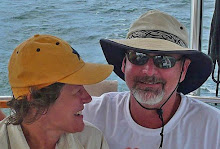
We took a two-day road trip to Tikal, the largest Mayan archaeological sight. We started our journey at 8:00 am with a water taxi from our marina into the town of Rio Dulce. From there we took a 4-hour bus ride to Flores were we caught a van arriving at Tikal 4:00 that afternoon.

The first thing about Tikal that hit me was the setting and not the structures. It’s located in the center of a rainforest preserve that’s over 200 square miles. It’s lush and full of wild life; the trees are huge and alive with air plants, hanging nests, spider monkeys, howler monkeys and birds of all kinds.

The next thing that surprised me was how much of a work-in-progress it is. Exploration and excavation is continuous as they have only uncovered and restored a tiny fraction of the over 3000 structures.

The last big surprise for me was how long the sight had been occupied by the Mayans - over seventeen hundred years of continual use. Makes New York City seem like a newborn in comparison.

We hiked into the park and made our way to Temple IV to watch the sun set and hear the jungle come alive for the evening. Right after the sun set we were treated to the sight of the full moon raising over temple I. We made our way out of the park in the last dim light of the day and it was completely dark by the time we got back to our hotel. We went straight to bed after dinner as we had made arrangements to meet a park guide at 4:15 the next morning.

It was pitch black when we meet our guide Chino and three other travelers (one from New Zealand, one from Australia and a guy from Boston). As we hiked into the sight thunder and lighting split the black sky and gave us dramatic glimpses of temples and pyramids. It seemed like the ancient gods were indeed speaking and they had a lot to say. We made our way on to Temple V (probably the steepest climb of all) to watch the sunrise. Susan was glad it was dark when we went up this one; it made it easer for her to cope with the height. Up, up, up we climbed until we reached a small ledge were we all perched to witness the start of a new day in this incredible place.

Because it was overcast we didn’t get to see the sunrise but we did witness the veil of darkness being slowly lifted and the temples of Tikal emerge from the mist. The cry of Howler Monkeys and the songs of birds provided the background accompaniment.
 The place is filled with altars the one in the above photo is located in the Central Plaza between Temple I & Temple II. This contemporary altar is used for Mayan ceremonies today.
The place is filled with altars the one in the above photo is located in the Central Plaza between Temple I & Temple II. This contemporary altar is used for Mayan ceremonies today. 
The above photo is of the pyramid at the Mundo Perdido (Lost World) Complex.

Besides walking around we did a lot of climbing throughout the day. Inspecting the buildings at our leisure and integrating the information provided to us by our guide, we were able to begin to imagine what this civilization might have been like when the population reached an estimated 100,000. Being introduced to a site such as this asks more questions that beg to be answered. Our interest has been titillated.

It was after 10:00 PM when we finally got back to our marina. We got some more thunder and lighting accompanied by light rain that lent more atmosphere to our boat ride home and the end of two very long and fulfilling days of travel and exploration.










































